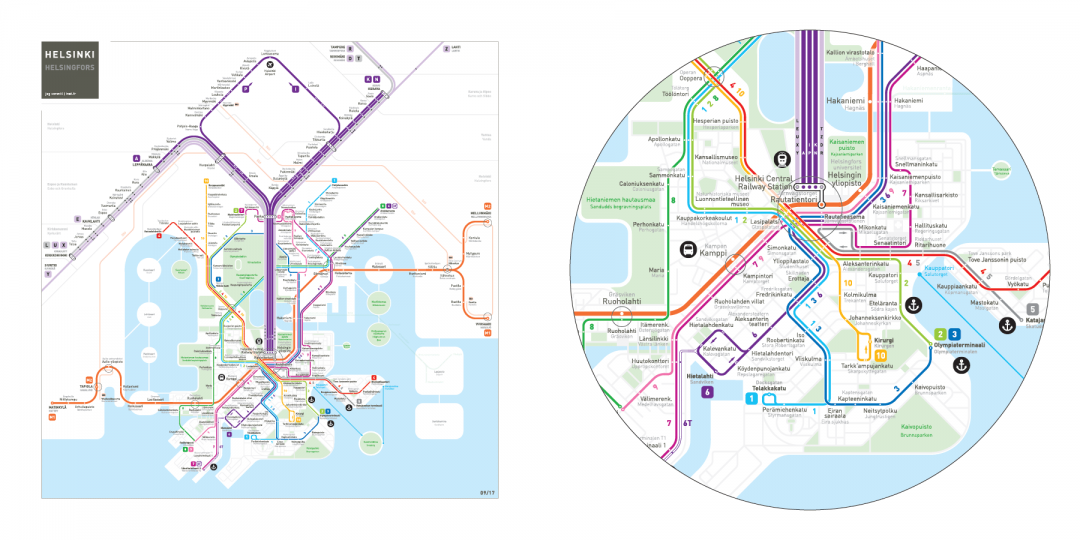Many, many times, I’ve asked a transit agency’s leaders about their fare policy, and been told instead about their ticketing technology. “Are you thinking about fare structure?” I ask. “Yes, we’re on it!” they say. “We’re working on this fabulous smartcard!” Don’t trust a fare expert who can’t distinguish the policy decisions that set fares and the technologies that implement them.
Arielle Fleisher of SPUR has a good piece on fare policy in the Bay Area, which will be useful to anyone in multi-agency regions in North America.[1] Describing Clipper, the smartcard shared by almost all of the region’s 27 transit agencies, Fleisher writes:
There is no denying that the Clipper card is a magical piece of plastic. Since its debut in 2010, Clipper has made it much easier for people to switch between different transit systems and travel throughout the region. But if you look under Clipper’s hood, it quickly becomes apparent that the card’s magic masks a complex web of transit far es, passes and policies that ultimately limit its effectiveness. Put simply, a close look reveals that the Bay Area has a fare policy problem.
es, passes and policies that ultimately limit its effectiveness. Put simply, a close look reveals that the Bay Area has a fare policy problem.
Back in the 80s and 90s, when I worked in the Bay Area, there was no “hood” to look under or “mask” to hide behind. The mess was in everyone’s faces. The many transit agencies required their own paper tickets or passes, and your only hope of moving freely across agency boundaries was to carry numerous rolls of quarters.
As the Bay Area considers the next generation of Clipper, Fleisher rightly warns of the risk that the region’s leaders will focus on making the technology cool rather than making the fares logical. She enumerates five problems a multi-agency fare policy should solve:
- Disparate fares make using transit confusing.
- Separate fares for different agencies are a problem when one agency substitutes its service for another’s, as happens during disruptions.
- There isn’t a single pass that employers can purchase for their staffs.
- The system penalizes trips that happen to require multiple operating agencies. (And note that some agencies still charge for connecting between services of the same agency!)
- The system makes it hard to do coherent discounting for low-income persons.
To which I can only say, yes! And yes, we were yelling about all this 30 years ago. The smartcard “solved” this problem only for relatively fortunate people. If you don’t have to think about what you’re spending, you can just buy a Clipper card and wave it everywhere. So there’s a risk of elite projection, in that many decision makers, who tend to have above average incomes, no longer experience the problem in their daily lives, the way everyone did back in the pre-Clipper days.
Still, the fare problem in a multi-agency region is genuinely hard. If it weren’t, we’d have solved it long ago, because technology was never the real barrier. Consolidating all the agencies into one isn’t the answer. The point is to have clear boundaries and clear relationships across those boundaries. But as long as there are multiple agencies, each agency has its own budget to balance. Introducing new inter-agency fares costs money for each agency, as more fares have to be shared with other agencies that were part of each person’s trip. Unless there is some new funding, the money has to come from raising the base fare, which is one of the most unpopular things a transit agency can do. Integrated fares, when they happen, will be a cost item. They always are.
And as I can’t emphasize too strongly, every time you tell a transit agency to use its limited funds to do something other than run service, you’re telling them to cut service.
Even if you don’t live in the Bay Area, Fleisher’s article is a good read. Chapter 11 of my book Human Transit also explores fare issues. And if you’re interested in the dynamics of how a big North American metro deals with having 27 transit agencies, and why that might not be a bad thing, there’s my article on seamlessness, itself a response to an excellent SPUR paper on the subject. (And again: if you want to see how influential, respected, and popular a local policy institute can be, you should learn about SPUR!)
[1] The transit agency structure that I describe here is mostly a North American concept. Elsewhere, the problems described here arise between operating companies (publicly or privately owned) that have the right to set fares and keep fare revenue while also getting subsidy from a government transport authority — a so-called “net cost” contract.” The new best practice is “gross cost” contracts, where the government keeps the fare revenue. This lets the government authority control the fare policy decision, because only its own revenue is at stake. (It also lets the government design a coherent network.)


 es, passes and policies that ultimately limit its effectiveness. Put simply, a close look reveals that the Bay Area has a fare policy problem.
es, passes and policies that ultimately limit its effectiveness. Put simply, a close look reveals that the Bay Area has a fare policy problem.